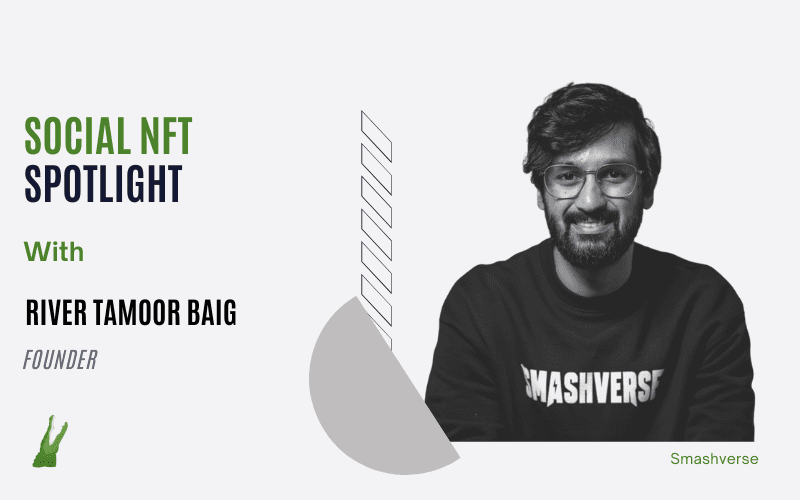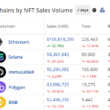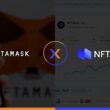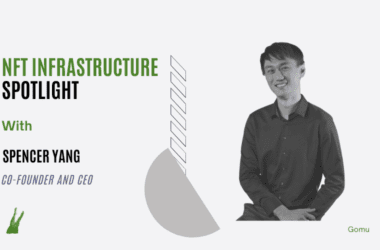It’s no secret that NFTs create tremendous social value not just for creators who get to connect with communities that have formed around their collections, but also for holders who feel a sense of belonging in these communities, what with the rise of profile picture (PFP) NFTs and the perceived status that comes with owning a blue-chip PFP, turning some NFT enthusiasts into influencer in the space.
Having witnessed the Web3-driven shift in digital ownership, identity and self-expression, battle royal Web3 gaming platform, Smashverse, is creating NFTs that are not only game-ready but also PFP-worthy. These assets are what Smashverse calls Social NFTs (SNFT).
Each SNFT is linked to its own Twitter account, designed for the holder to interact with other players and publicly challenge them to a battle or share game-relevant content on social media, ultimately with an aim to build a personal brand for the holder. If the SNFT changes hands, so does access to the Twitter account.
To dig deeper into the assets that Smashverse calls the “world’s first socially connected NFTs,” we speak to Smashverse’s founder River Tamoor Baig to learn more about what makes the perfect PFP and what SNFTs mean for the Web3 space.
Please tell us about yourself and the story behind Smashverse.
Smashverse was born out of a love for combat video games and a desire to see something new in the genre. I grew up playing games like Super Smash Bros and Tekken. I can’t count the number of hours I sunk into the series. Similarly, I loved large-map multiplayer games like Call of Duty and Halo.
Despite the rise of the Battle Royal genre, gamers haven’t quite had an in-depth melee combat battle royal experience. Battle Royal games like Fortnite and PUBG are first-person shooters, whilst they’re great games, they didn’t quite give me the experience I was looking for. And with that realisation that there was a gap in the market, Smashverse was born.
What piqued your interest in the blockchain gaming and NFT space and where did you first hear about it?
I have also always been a tech entrepreneur bootstrapping various deep tech companies before entering crypto in 2016. My first contact with the space was through Ethereum, then the ICO boom in 2017/2018 and then DeFi summer in 2020. When I first heard about Axie in early 2021 it clicked and I became totally hooked on NFTs and GameFi projects. I loved the creative energy in the space and witnessing the emergence of some of the most iconic projects such as Azuki, Bored Apes or even Proof.
The more time I spent researching the industry and becoming part of some of the NFT communities, it became clear to me that I have to combine my passion for combat games and blockchain tech to help innovate in the space.
As gamers use Smashverse’s SNFTs on social media and other platforms, it only increases the visibility of the game. Please tell us more about Social NFTs and how they benefit gamers.
Social NFTs or SNFTs are NFTs that have their own social media presence as they are connected to Twitter accounts. If an SNFT transfers ownership, so does the access to the Twitter account.
This is a crucial innovation for the overall NFT space as SNFTs give a permanent space and voice to NFTs. SNFTs allow their holders to create and build on their digital brand in whatever creative way they want.
In the context of Smashverse SNFTs will help bring in-game characters to life on social media platforms deepening and broadening the social aspects of our game. SNFTs will be able to talk about Smashverse and its respective gameplay on social media platforms as well as publicly interact with other SNFT in-game characters. We envision that players can form alliances or challenge other players through their in-game characters
As each of Smashverse’s Social NFTs is tied to a Twitter account, are tweets to the account automated based on the player’s achievements in the game or does the player have to manage the account themselves? If it’s the latter, some people might not have time to do so.
Each owner will have to post on behalf of the SNFT, though we will make it easy, potentially even automate for owners to provide relevant updates e.g. posting battle results, and participation in upcoming tournaments. In-game stats and results associated with the SNFT are also captured in our proprietary SNFT dashboard making them visible to all players and providing bases for interactions.
As we can already see on crypto Twitter/social crypto discourse many holders deeply identify with their NFTs and are eager to build out a second/alternative more detached online presence using their NFT as the primary gateway. SNFTs will make it possible for holders to develop such a social media presence/brand in a Web3 native way.
Besides linking to Twitter, how else does the SNFT empower players to build their digital brands?
We will also integrate other social media platforms such as Twitch. On each of these platforms, players can build the digital brand of their SNFT. In addition, we will deeply integrate SNFTs into the social component of our games, therefore, making them a tool to access in-game communities. Our SNFT platform captures all gaming stats of the SNFT, therefore, acting as a public gaming profile of the SNFT. Branding could therefore be developed around certain in-game achievements such as winning championships or tournaments. An SNFT can become known for its superior/iconic gaming performance.
In your opinion, what qualities should the perfect PFP have? What makes some existing PFP projects out there more successful than others?
A perfect PFP varies by category. For GameFi, we believe that the holy grail for gaming projects lies in the realm of a clearly defined utility with a strong emotional identity. This enables holders to go beyond “I’m enjoying the game” to actually “I love my character, I want to do more with it”.
From a utility standpoint, It must be clear to the user what they can do with the NFT e.g. become part of community “x”, play game “y”, and visit world/metaverse “z”. If they clearly understand and value the utility the NFT provides them with then that builds the basis for why a holder would use the NFT as a public PFP. Especially the access to community, which is so deeply ingrained in the concept heard identity which is central to human existence, plays a critical role. This is also the bridge to the emotional identity invoked by a NFT.
Holders evaluate the NFT as a potential PFP if it signals belonging to a community that they want to be publicly associated with. The Bored Apes have mastered the aspect of Utility and/through the community as they morphed from a simple PFP to a community with a strong identity that is building a metaverse in which BAYC and MAYC holders as well as other projects can interact and participate in a vibrant social and economic world.
Another huge factor in creating emotional identity is of course the aesthetics of the PFP. But this is not as straightforward as one would think. Simply a “pretty” PFP won’t cut it. Looking at some of the most successful projects out there e.g. Azuki, BAYC, Clone X, it stands out that they are very playful with the body proportions and the angle of the faces. This needs to be paired with strong facial features (or the complete lack thereof) to make the PFP interesting and non-ordinary. Layered on top, of course, are clothes. Here it depends if the project understands its target audience well, picking up and innovating on relevant aesthetic aspects of the respective subculture.
How can exactly Smashverse’s SNFTs be ported to other games’ metaverses? What other utility do they have?
All our SNFTs are fully 3D modelled and rigged so they can be used in any 3D metaverse or game. This is a core utility of our SNFT and to date, no other collection offers this utility to its users. Smashverse does not control the utility of NFTs in other games/digital worlds but we encourage composability and would love to see our NFTs be used in other digital worlds.
Where do you see the future of Social NFTs and what does it mean for the Web3 space?
Social NFTs are an important further development in our understanding of identity in Web3. They decouple the NFT’s social media existence from the existence of the (human) owner. They are the first truly digitally native ID that has its own existence in the digital realm.
This is a fundamental innovation for Web3, as this space is redefining our digital collaboration and coordination and identity is a key part of it. SNFTs will allow bootstrap social networks and coordination layers around digitally native identities that are getting transferred with the NFT. SNFTs obviously also play into other important narratives in web3 such as anonymity and privacy which play a continuously increasing role
What are the most challenging aspects of your role at Smashverse and how do you overcome these challenges?
My biggest challenge on a day-to-day basis, along with the whole leadership team, is to cancel out all the noise and to prioritise the team correctly. In order to deliver on our vision, we need to execute extremely well – this includes game development, art development, community building and management. We ruthlessly track the progress of the key initiatives and deploy resources where there are most needed.
Timing the market for our NFT sale has also been a key challenge. Our goal is to bootstrap an extremely strong and highly engaged community for our early game releases. We therefore have partnered with the best launchpad in the industry, Metadrop, who have been stellar in helping us navigate the market and develop the right process for our main sale
How does Smashverse plan to scale in the next few years?
We are applying a very audience-centric and analytical development and growth strategy. Very similar to how the most successful AAA game studios are developing and scaling games. Once our core gameplay is fully tested and achieving engagement metrics that we are happy about we will transition to user acquisition/performance marketing in the second half of 2023 to acquire large audiences on a global scale.
We will also expand the reach of our game by expanding to other platforms such as mobile and console.
What do you think about the current state of the blockchain gaming space? What kind of role is Smashverse playing in it?
Blockchain gaming is extremely exciting as it is still so early. We all witnessed the rise and fall of play-to-earn which taught us many valuable lessons, positives and negatives, around player behaviour, community management and game economies. The main lesson we all learned is that games have to be fun, attracting and retaining players because of the core fun gameplay experience.
We are now entering the second phase of blockchain gaming with many extremely strong teams with long-standing game development experience developing fun games.
Our thesis is that in this phase we will see the emergence of games that predominantly focus on fun gameplay (not just tokenomics) that simply use Web3 tech such as NFTs to deepen the engagement of their audience.
There are many tools out there that will make onboarding of traditional gamers to the blockchain a breeze and allow game developers to integrate asset ownership in a way that will not take away from the actual gameplay fun but empower the user to own in-game assets and participate in frictionless in-game economies if they wish to do so. These tools will make asset ownership so easy that “ownership” will become a very native term in the gaming industry replacing the much more loaded term “NFTs”.
Where do you think we could see blockchain gaming in the near future?
I am a firm believer that we will see rapid adoption of blockchain technology in games. NFTs simply provide a much better way of engaging and monetizing your player base while providing them with new fundamentally important capabilities such as owning their assets and choosing what to do with them. We are finally entering the 21st century when it comes to digital ownership and all the layers and structures that will be built around it.
Platforms such as Utiliti and Stardust will make it extremely easy to onboard new users to the blockchain taking away the friction from which many DeFi apps still suffer such as having your own wallet, using dApps to fund your wallet etc.
Stay up to date:





